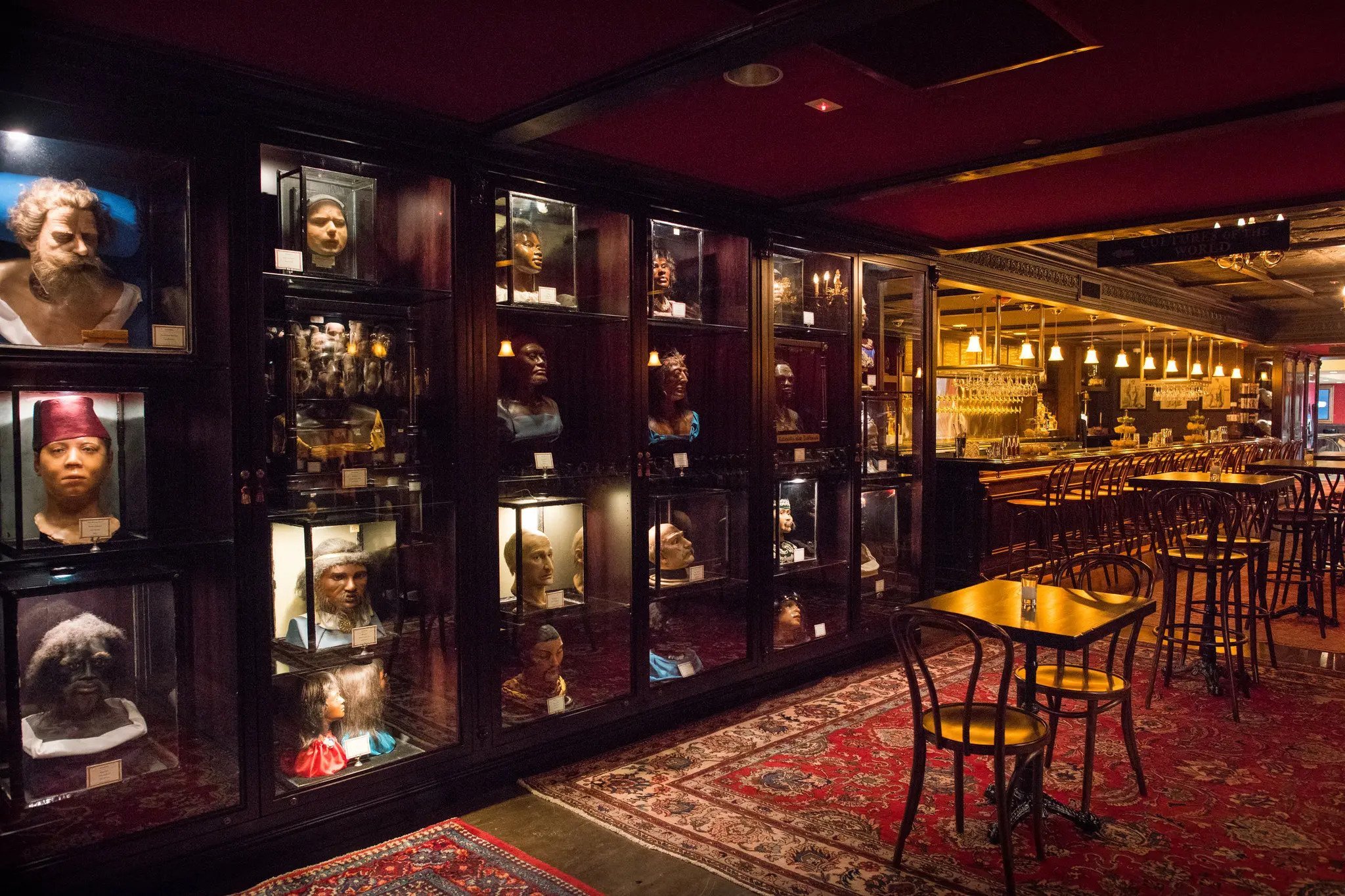House of Wax
Brooklyn, New York
Combining mixology with the macabre, House of Wax is Brooklyn’s newest, and a most curious, full-service bar.
Based on the panoptica touring attractions of the late 1800s, House of Wax exhibits a rare selection of waxwork sculptures featuring life-size, realistic displays of anatomy, pathology, anthropology, and even death masks of famous (and infamous) celebrities.
A wholly unique spot to meet your friends, House of Wax features a full menu, cocktails, beers and so much to see.
Location
4th floor across from Alamo Drafthouse ticketing and concierge. You do not need a movie ticket to visit the bar.
PARENTAL ADVISORY. CONTAINS GRAPHIC IMAGES.
Address
City Point BKLYN
445 Albee Square West
Brooklyn, NY 11201
Contact
718-513-2547
FOR MORE INFORMATION, PLEASE CONTACT ALAMO DRAFTHOUSE DIRECTLY.
PHOTOS BY JOSHUA BRIGHT, THE NEW YORK TIMES
& VICTORIA STEVENS, HOUSE OF WAX
A Museum In A Bar
In 2016, Ryan Matthew Cohn, an avid collector and dealer of oddities, successfully rescued the collection by finding a buyer interested in acquiring the entire assortment.
This fortunate buyer turned out to be Tim League, the Founder of Alamo Drafthouse Cinema. Recognizing the intriguing correlation between the sensational collection and exploitation films—both forms of entertainment designed to captivate audiences—League saw the potential for the collection to become an enticing attraction at the bar of his newly established theater.
Exhibit Selections
🫁
Exhibit Selections 🫁












“I was fascinated by the collection
— I think there’s a narrative
to be told there.”
Tim League
FOUNDER OF ALAMO DRAFTHOUSE CINEMA

Castan's Panopticum
Berlin, 1869–1922
Anatomical
🫀
Pathological
🧠
Ethnographic Waxworks
👁️
Anatomical 🫀 Pathological 🧠 Ethnographic Waxworks 👁️
Most of the objects displayed in "House Of Wax" are the remnants of a largely forgotten popular exhibition known as Castan's Panopticum. Founded in Berlin in 1869 and lasting until 1922, Castan's was a museum its German contemporaries described as an "Allesschau," a "show of everything."
Panoptica was popular throughout Europe from the 18th through the early 20th century Like dime museums such as Barnum's American Museum, these largely forgotten spaces fall somewhere between aristocratic cabinets of curiosity and today's ideas of museums. Castan's was a typical panopticum of its day, displaying for a popular audience anatomical and pathological waxworks; death masks of celebrities and murderers; ethnographic busts; Anatomical Venuses, or wax models of anatomized recumbent women; waxes showing the effects of syphilis (still a fatal disease at this time) as well as assorted curiosities such as mummies, stuffed alligators, and monkey skeletons. They also presented live acts such as singers, dancers, ventriloquists, and hunger artists. Its spectacle hovered between the exotic and the scientific.
In many ways, the panoptica's sensational, shocking, and sometimes morbid qualities were clear commercial calculation on the part of entrepreneurs whose livelihoods depended on drawing the largest possible paying audience, which in fact came in sizable numbers.
However, in an age notoriously reticent about topics related to the body and sexuality, some of the more graphic anatomical waxworks served to both titillate and were defended under the guise of education and scientific study.
In its heyday, Castan's could attract as many as 5,000 visitors on a single Sunday, with an appeal so strong that franchises were established in Cologne, Frankfurt am Main, Brussels, and Amsterdam.
But panoptica did not survive past the 1920s and 1930s, for reasons that have only partly to do with their increasing association with lower cultural status. This, of course, did not help panoptica endure or make their objects seem worthy of preservation. But panoptica also yielded to pressure from film and later television, media that could respond to the ever-increasing pace of current events with stunning visuality of their own. Fields such as anatomy, pathology, and anthropology also became ever less collections-based, making the assemblages of material in panoptica appear increasingly antiquated and distant from the realms of knowledge that once lent them middle-brow status. Looking back, it is easy to understand why so many panoptica ended up either dispersed or destroyed.
In this exhibition, we attempt to revive and evoke the atmosphere of Castan's Panopticum. The majority of the waxes you see are drawn from that collection, while additional artifacts are drawn from private collections.
DR. PETER M. MCISAAC


